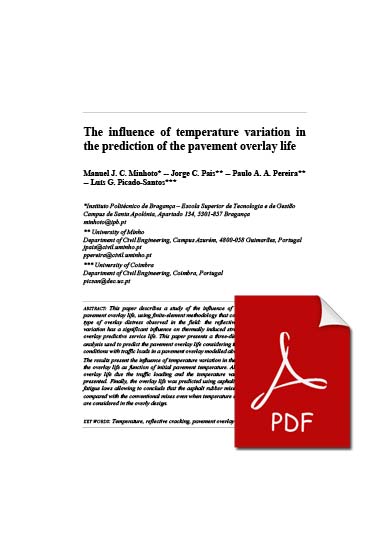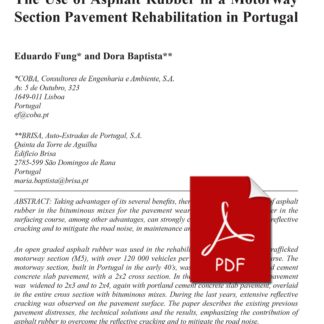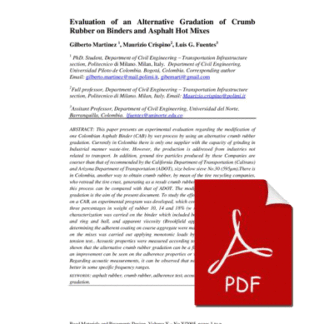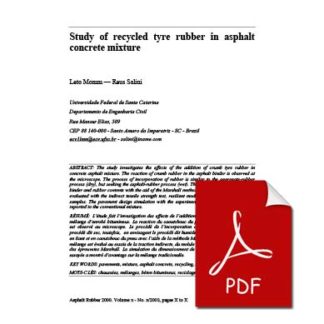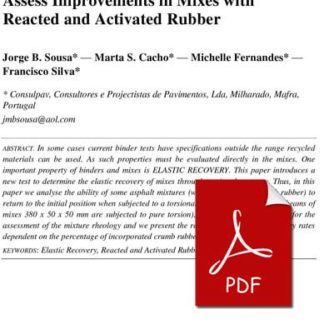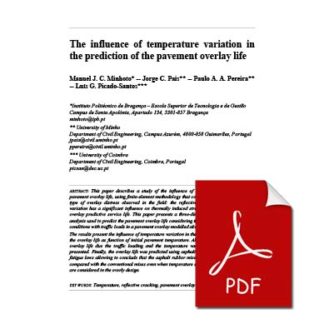Description
This paper describes a study of the influence of temperature variation in the pavement overlay life, using finite-element methodology that considers the most predominant type of overlay distress observed in the field: the reflective cracking. The temperature variation has a significant influence on thermally induced stresses that, in turn, affects the overlay predictive service life. This paper presents a three-dimensional (3D) finite element analysis used to predict the pavement overlay life considering the combination of the thermal conditions with traffic loads in a pavement overlay modelled above a cracked pavement.
The results present the influence of temperature variation in the cracked layer and overlay in the overlay life as function of initial pavement temperature. Also a comparison between the overlay life due the traffic loading and the temperature variation in the overlay life is presented. Finally, the overlay life was predicted using asphalt rubber and conventional mix fatigue laws allowing to conclude that the asphalt rubber mixes exhibits more pavement life compared with the conventional mixes even when temperature effects (temperature variation) are considered in the overly design.

